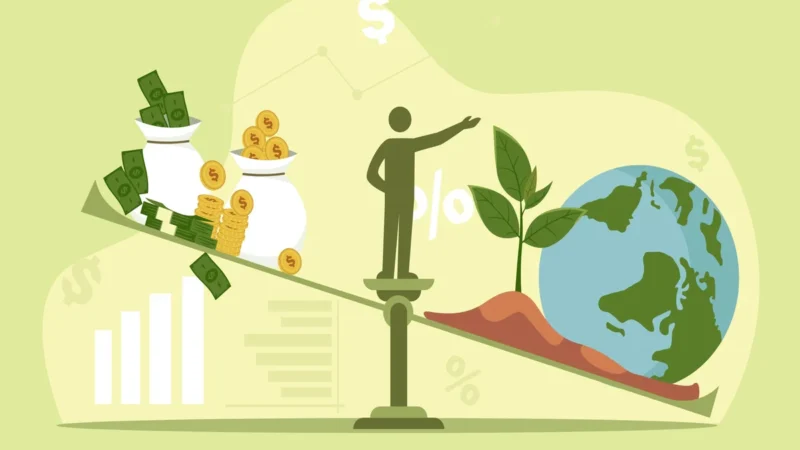Circular Economy Examples: Driving Sustainable Resource Management

The concept of the circular economy aims to shift from the traditional linear model of production and consumption towards a more sustainable and regenerative approach. By designing out waste and promoting the reuse, repair, and recycling of materials, the circular economy seeks to maximize resource efficiency and minimize environmental impact. In this article, we will explore several compelling examples of circular economy practices and initiatives that are transforming industries and promoting a more sustainable future.
Closed-loop Recycling
Closed-loop recycling is a fundamental pillar of the circular economy, involving the collection and processing of waste materials to create new products or materials. For instance, companies like Interface, a leading modular flooring manufacturer, have implemented take-back programs to recover old carpets and recycle them into new products, reducing landfill waste and conserving resources.
Product-as-a-Service
Product-as-a-Service (PaaS) models enable users to access products and services without needing to own them outright. This shift from ownership to access promotes resource efficiency and reduces waste. For example, companies like Rent the Runway allow customers to rent high-quality fashion items for a limited period, extending the lifespan of garments and reducing the need for fast fashion production.
Remanufacturing and Refurbishment
Remanufacturing and refurbishment involve restoring used products to a like-new condition, extending their lifespan and reducing the demand for new manufacturing. Companies such as Xerox have embraced remanufacturing by refurbishing and reusing parts from returned devices, reducing waste and conserving resources while providing customers with cost-effective options.
Sharing and Collaborative Platforms
Sharing and collaborative platforms facilitate the sharing of underutilized resources, reducing the need for individual ownership and promoting resource optimization. Platforms like Airbnb enable people to rent out spare rooms or entire properties, making more efficient use of existing infrastructure and reducing the environmental footprint associated with new construction.
Biomimicry and Cradle-to-Cradle Design
Biomimicry involves drawing inspiration from nature’s solutions to design products, systems, and processes that mimic natural cycles and promote sustainability. Cradle-to-Cradle (C2C) design aims to create products that can be safely and fully recycled or biodegraded, ensuring that materials remain in circulation. The Ellen MacArthur Foundation’s Circular Fibres Initiative focuses on developing circularity in the fashion industry by applying C2C principles.
Key Takeaways:
The examples provided illustrate how the circular economy can be implemented across various sectors, highlighting the potential for resource efficiency, waste reduction, and sustainability. By adopting closed-loop recycling, embracing product-as-a-service models, promoting remanufacturing and refurbishment, utilizing sharing and collaborative platforms, and integrating biomimicry and cradle-to-cradle design, businesses and individuals can contribute to a more sustainable future. The circular economy offers not only environmental benefits but also economic opportunities and enhanced resilience in the face of resource scarcity. Embracing these practices and continuing to innovate within the circular economy framework will be crucial for a sustainable and prosperous future.
FAQs
Q: What is the circular economy?
A: The circular economy is an economic model that aims to minimize waste and maximize resource efficiency by promoting the reuse, repair, and recycling of materials. It seeks to shift from the traditional linear model of production and consumption towards a more sustainable and regenerative approach.
Q: Why is the circular economy important?
A: The circular economy is crucial for addressing environmental challenges and achieving long-term sustainability. By reducing waste, conserving resources, and promoting sustainable practices, it helps mitigate the negative impacts of traditional linear economies, such as resource depletion and pollution.
Q: What are some benefits of the circular economy?
A: The circular economy offers numerous benefits, including reduced waste and pollution, increased resource efficiency, cost savings, job creation, and enhanced resilience in the face of resource scarcity. It also promotes innovation, collaboration, and the development of sustainable business models.
Q: How does closed-loop recycling work?
A: Closed-loop recycling involves collecting and processing waste materials to create new products or materials. It aims to keep materials in a continuous cycle of use rather than sending them to landfills. Companies often implement take-back programs to recover products or materials and recycle them into new ones, reducing waste and conserving resources.
Q: What is product-as-a-service (PaaS)?
A: Product-as-a-Service is a model that allows users to access products and services without needing to own them outright. It promotes a shift from ownership to access, encouraging shared utilization and reducing the demand for new production. PaaS models are commonly seen in industries like fashion, where companies offer rental or subscription-based services.
Q: How does biomimicry contribute to the circular economy?
A: Biomimicry involves drawing inspiration from nature’s solutions to design products, systems, and processes that mimic natural cycles. By imitating nature’s efficiency and regenerative capabilities, biomimicry promotes sustainability and supports circular economy principles. It helps create innovative and sustainable designs that minimize waste and maximize resource use.


